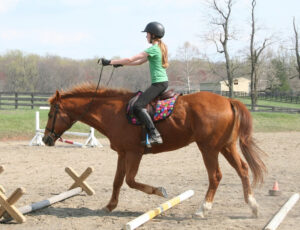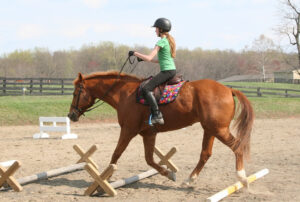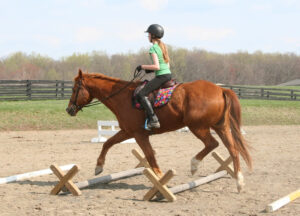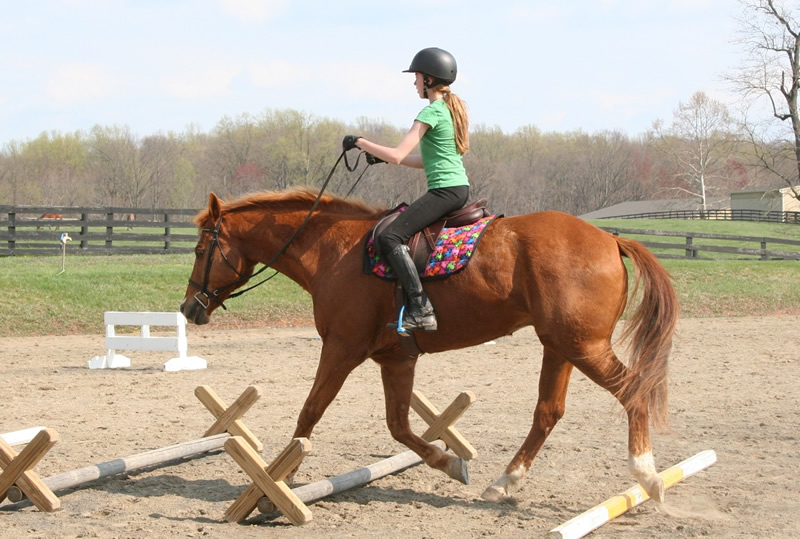Do you lose your balance over fences? Do you pull on your horse’s mouth? Would you like to develop independent hands? Here’s a quick tip to free up your contact and start the process of developing an automatic release over fences.

Are you dependant on your hands for balance over trot over poles and jumps? Do you rest your hands on the horse’s neck? Do you stiffen and hold your breath as you approach the jump or inadvertently hit your horse in the mouth on landing? All of these problems can be the result of relying on a crest release instead of good balance. A crest release is fine for beginners but should be temporary.
An “automatic release” is when you maintain a straight line from your elbows to the horse’s mouth over the jump. Riders who use an automatic release demonstrate a solid base of support and good balance over fences and ensure that the horse will be able to use his neck fully while jumping. Here’s help to progress from the crest to an automatic release.
For this lesson you need a horse that does not rush poles or jumps. Hold the reins towards the buckle so that you don’t pull on your horse’s mouth. Begin at the stand still to familiarize yourself with the exercise. Progress on the flat, to over poles, cavaletti and finally small jumps in both upright and jumping positions.

Extend your arms fully in front of you at shoulder height. Bend your elbows and allow them to come to your sides. From your sides extend your elbows and raise your hands to shoulder height again. Effectively you are making a circle with your arms going away from you when your hands are at the lowest point (close to the saddle).
You can make circles in the opposite direction but the difference is that this circle ends with your hands come back to you when they are at their lowest point. This makes some riders pull back on the reins. I prefer having the hands come back to you when they are at their highest (shoulder height) which helps break any tendency of pulling on the reins.
Keep the circles slow. Notice if there is a portion of the circle you can do slowly but then another part where you rush. Can you count to 4 as you make one circle? Are you able to fully extend your elbows and raise your arms?
At the walk can you keep your arms moving continually or do you freeze, stop or drop your hands if your does anything you did not anticipate? Can you keep the circular movement going even if you have to turn, slow down or speed up?

Progress from the walk, to the trot and eventually the canter. Make sure the arm circles are slower than your rising trot speed. If your circle gets quick or ragged then you are tense somewhere or holding your breath. Make sure you keep breathing as you do the exercise.
Add forward seat, going over trot poles, cross-rails and small jumps. When you can make continuous slow circles at all gaits and over small jumps your balance will be significantly improved and you will be ready for the next step in developing an automatic release, which I will present in a future article.
Use this Murdoch Minute to help you begin to develop an automatic release when jumping. As your balance improves through this exercise you will no longer depend on your arms and hands for balance over poles and eventually over fences.
Photos by Teresa Edwards
Wendy Murdoch resides in Washington, VA. She teaches riders of all levels and disciplines how to improve the horse’s performance by improving their body position. On-line join Wendy’s Facebook group Fans of the Murdoch Method and find more articles, her blog and new book 50 5-Minute Fixes to Improve Your Riding, based on the Murdoch Minutes at www.murdochmethod.com.




